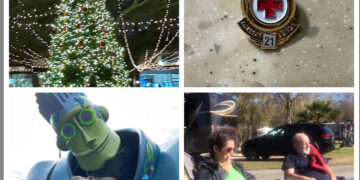In last month’s column, I shared some stats from Travis Bradberry’s book, Emotional Intelligence 2.0, emphasizing just how much impact this thing called emotional intelligence – or EQ – can have on so many aspects of our lives. I mentioned how he explains the idea as the “something in each of us that’s a bit intangible” and how annoyed I was when he stated that his studies showed it “accounts for 58% of performance in all job types.” Really, he’s gonna tell me something intangible matters that much.
As we looked at the first “component” of emotional intelligence, self-awareness, I referenced some research that had been done about a century ago by William Marston that’s helped me develop a solid foundation with self-awareness but also with the second component of emotional intelligence; self-management. Before I get to that though, let me be very clear about something I learned during nearly two decades of work in behavior-based safety. There’s absolutely no shortage of charlatans in the marketplace who are promoting the latest and greatest test or study with fancy charts and colors that tell us all kinds of nifty things about who we really are. But the challenge with nearly all that I’ve seen ties right back to that intangible piece that Bradberry mentioned. I don’t care how pretty or fancy it is if I can’t use it!!!
Now for that cheat code… (If you’re not tracking with me on the whole “cheat code” idea, I’m picturing the book that showed me where to find the hidden mushrooms in Super Mario Brothers on the first Nintendo system – nothing diabolical…) Through the research he did leading up writing The Emotions of Normal People, William Marston developed a framework for categorizing the way different people behaved and communicated. He realized that everyone was emotionally wired a certain way and that wiring played a key role in the behaviors they exhibited and how they communicated with the people around them. If you’ve read this column for a while, you’re likely familiar with each of the four primary behavioral styles he defined that we know today as the DISC Model of Human Behavior. When we invest the time to understand this model, specifically how we’re wired to behave as individuals as well as how that can impact our response to the world around us, emotional intelligence becomes a bit less intangible due to a higher level of self-awareness.
OK, that’s kinda cool… But what about that next piece, self-management. That’s where I first saw real tangible value from one of the many assessments I had been bombarded with in my behavior-based safety days; not necessarily the catchiest or the fanciest, but one that was easy to understand, simple to apply, and scientifically validated to be statistically accurate – and built around the mountain of research Marston had done studying emotions and human behavior. The results from that particular assessment gave me insight on how I would likely behave when things were going smoothly as well as when things got tense. Once I understood those trends, I had an amazing cheat code for controlling how I responded in even the most stressful situations! Self-management, if you will…
Not only did that help me communicate with the people I cared about more effectively, it gave me what I needed to begin working on the third component of emotional intelligence that we’ll look at next time…































